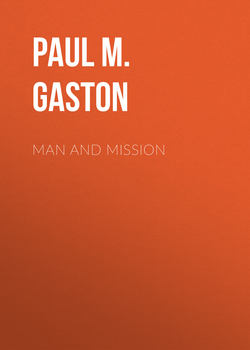Читать книгу Man and Mission - Paul M. Gaston - Страница 7
На сайте Литреса книга снята с продажи.
ОглавлениеE.B. Gaston in 1894, the year he led settlers to Alabama.
Preface
THIS IS A BOOK ABOUT A MAN, EARNEST B. GASTON, and a mission, the creation of the Fairhope Single Tax Colony. I briefly characterize Fairhope’s history over the past century in the first chapter. The remaining seven chapters describe Gaston’s intellectual journey in the 1880s and 1890s and the ways in which he and his colleagues hoped to engage the difficult social and economic issues of their age by creating a model community. The book ends as Fairhope begins.
E. B. Gaston was my grandfather. I was not quite ten when he died, and my memory of him is dim, but I always understood his special relationship to Fairhope. I came to imbibe the values of the community as I grew up in it, and to understand it as only an insider can. I have tried to use that special knowledge in writing this book, but I have also tried to guard against its potentially warping effect by seeking the distance and discipline of a professional historian.
That task is made easier by the wealth of material in the archives of the Fairhope Single Tax Corporation. In addition to the official records of the colony, all well preserved, I found there extensive correspondence to and from my grandfather, as well as the complete files of the Fairhope Courier. Unless I note otherwise, all of the primary material I cite in the notes is in the colony archives.
I began systematic work on the history of Fairhope more than fifteen years ago. Several short publications have appeared since then, but not the comprehensive history I hope one day to complete.4 When that book appears I will thank the many persons who have helped me over the years. Here I want to acknowledge those who have made this small volume possible.
In March of 1992 I asked Randall Williams if he would print a sixty-page pamphlet for me on the origins of Fairhope. I was taken aback when he said no. After all, he was supposed to be a friend. When he added that he would publish a short book on the subject a great cloud lifted. His encouragement and enthusiasm never wavered and I owe the existence of the book to this gifted editor. I am proud to be published under his imprint.
I presented the first draft of the manuscript to my colleagues in the History Department Workshop at the University of Virginia in September of 1992. The reception was heartening and the suggestions for improvement wonderfully varied and helpful. For their presence and encouragement I thank Ed Ayers; Brian Balogh; Alice Carter; Bob Cross; Rebecca Edwards; Megan Holden; Michael Holt; Ann Lane; Juliette Landphair; Mel Leffler; Andy Lewis; Nelson Lichtenstein; Brad Mittendorf; Duane Osheim; Anne Rubin; Pat Sullivan; and David Throup. Bill Taylor and Ann Schutte also gave me very helpful suggestions.
Lisa Szefel helped as my research assistant and showed me what an accomplished editor she is. Gwyneth Love, director of the Oberlin in London program, made me the beneficiary of her acute sense of style and tone to point me to many needed improvements. Gale Rowe, secretary of the Fairhope Single Tax Corporation, supported me all the way, gave me guidance on critical points, and generously shared his reactions with me. Fairhope is lucky to have him.
Fitz Brundage, of Queen’s University, Kingston, Canada, kindly let me read his unpublished essay on “The Utopian Moment in the New South.” He also shared with me his knowledge of the Ruskin colony and commented helpfully on my Fairhope work. Ron Yanosky found time during his first year of teaching at Harvard to read the manuscript and guide me to a better understanding of the national single-tax movement, the subject of his dissertation. He sent me numerous detailed suggestions—all of them immensely helpful—gave me a copy of his unpublished paper, “The Colored Farmers’ Alliance and the Single Tax,” and granted me permission to quote parts of it and to cite some of his other unpublished findings. This is scholarly generosity at its best, and I am deeply grateful for it.
My daughter, Chinta Gaston, pronounced the book good, and then marked up all but a few of my pages with red ink. She spotted sloppy constructions, suggested felicitous alternatives, and made me aware of ambiguous arguments and unwarranted expectations of my readers. I hope she will be available for the next book. Bill Abbot, my colleague and neighbor, has never ceased urging me to get on with my Fairhope work. He read this installment, pointing out dozens of ways to give it greater precision, clarity, and subtlety. I am fortunate to be among those who have been nurtured by his caring and by his sensitivity to our language.
Mary Gaston has been involved in every stage of my study of Fairhope’s history. She understands its nuances and is always there to share her insights with me. I have depended on her editing, as always, from first rough paragraph to last polished draft. Finally, although he was not here to read this manuscript, my father, the late Comie Gaston, was a constant presence as I wrote it. He told me much that I could have learned nowhere else and his measured judgments were always bench mark reminders.
PAUL M. GASTON
Charlottesville, Virginia
January 15,1993
